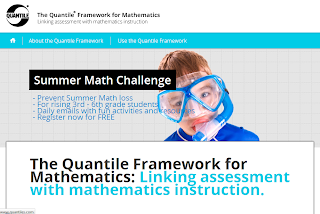This is really good stuff from Cathy Vatterott--packed full of ideas. I'm going to steal a few paragraphs to demonstrate the potency of the information.
The best homework tasks exhibit five characteristics. First, the task has a clear academic purpose, such as practice, checking for understanding, or applying knowledge or skills. Second, the task efficiently demonstrates student learning. Third, the task promotes owner ship by offering choices and being personally relevant. Fourth, the task instills a sense of competence—the student can success fully complete it without help. Last, the task is aesthetically pleasing—it appears enjoyable and interesting (Vatterott, 2009).
Ideally, homework should provide feedback to teachers about student understanding, enabling teachers to adjust instruction and, when necessary, reteach concepts before assigning practice. Assigning practice prematurely can cause student frustration and confusion.
Projects that require nonacademic skills (such as cutting, gluing, or drawing) are often inefficient. Teachers assign projects like dioramas, models, and poster displays with all the best intentions—they see them as a fun, creative way for students to show what they have learned. But unless a rubric clearly spells out the content requirements, projects may reveal little about students' content knowledge and much more about their artistic talents (Bennett & Kalish, 2006). Even content-rich projects can be inefficient in terms of time spent. Teachers often don't realize how many hours these projects take and how tedious they may be for both student and parent.
If all students are to feel competent in completing homework, we must abandon a one-size-fits-all approach. Homework that students can't do without help is not good homework; students are discouraged when they are unable to complete homework on their own (Darling-Hammond & Ifill-Lynch, 2006; Stiggins, 2007). To ensure homework is doable, teachers must differentiate assignments so they are at the appropriate level of difficulty for individual students (Tomlinson, 2008).
If the homework assignment is to "Study for the test," does that mean memorize facts, review concepts, or learn new material not covered in class? And how do students know what it means? Although a study guide or take-home test that shows students exactly what they need to know is helpful, they don't necessarily have to write or complete anything to study. Teachers should encourage students to create their own best method of reviewing the information, suggesting possible options, such as organizing notes into an outline, writing test questions for themselves, putting important information on note cards, or studying with a partner.
Meaningful homework should be purposeful, efficient, personalized, doable, and inviting. Most important, students must be able to freely communicate with teachers when they struggle with homework, knowing they can admit that they don't understand a task—and can do so without penalty.






